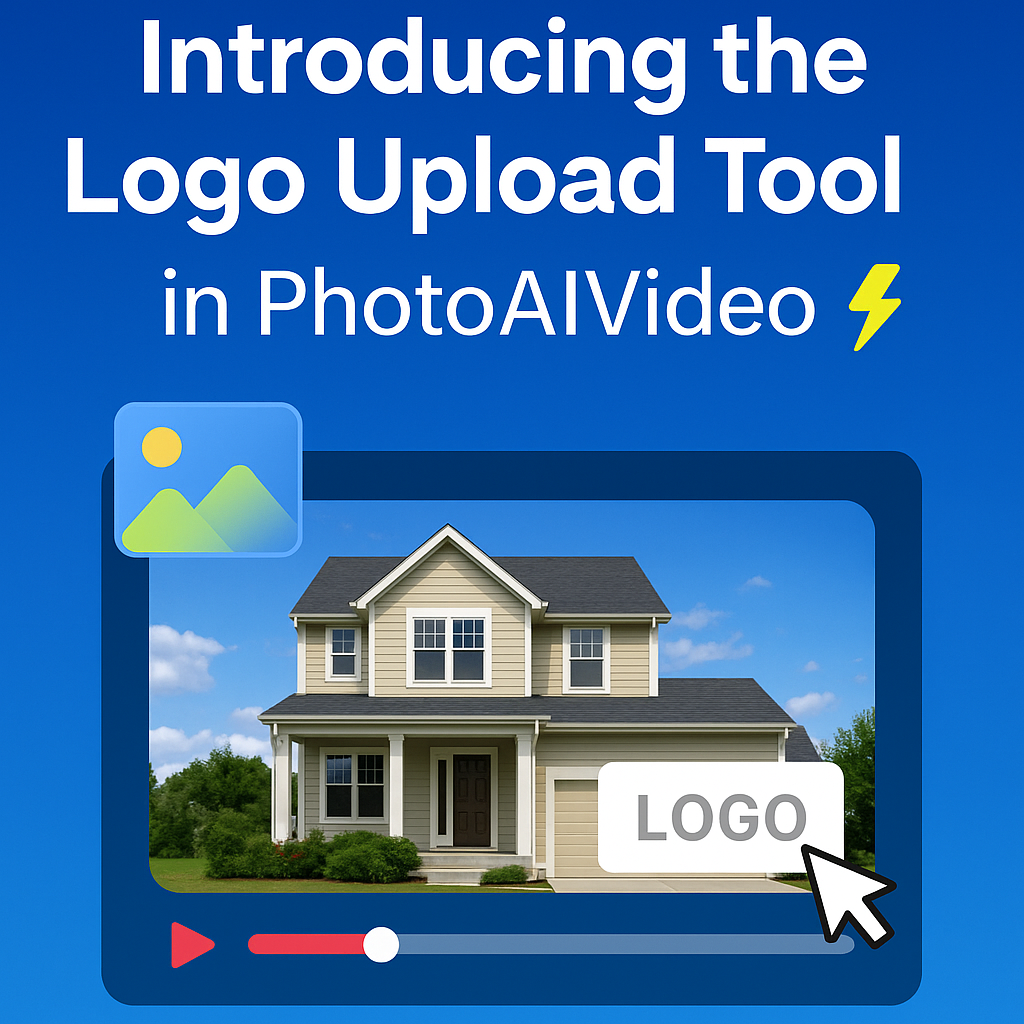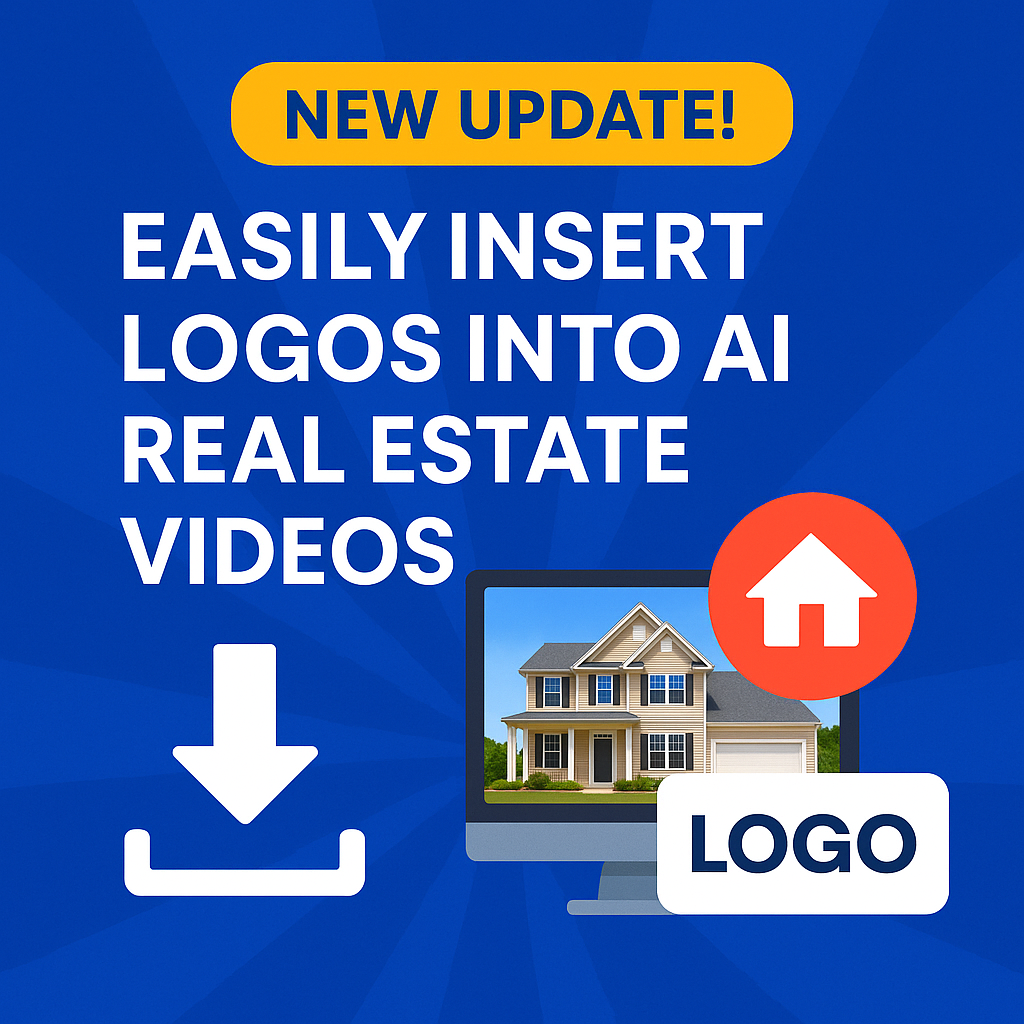Virtual tour software is changing the way businesses connect with their customers. It offers a fresh approach to showcasing products, services, and spaces by allowing potential clients to explore them in a virtual environment. This technology is not just for real estate anymore; it's making waves in events, education, and marketing too. By using virtual tours, companies can enhance customer experiences, improve engagement, and ultimately drive sales. Let's take a closer look at how this software is transforming various industries and helping businesses thrive.
Key Takeaways
- Virtual tour software enhances customer experiences by offering immersive exploration of spaces.
- Industries like real estate and events see significant benefits from virtual tours, including increased engagement and sales.
- Customization options allow businesses to tailor virtual tours to their branding and audience needs.
- Virtual tours help break down geographical barriers, reaching new customers who may not visit in person.
- Success stories from companies like Marriott and Century 21 highlight the tangible impacts of virtual tours on business growth.
Leading Virtual Tour Software Providers
There are a bunch of different virtual tour software options out there, each with its own strengths. It's important to pick one that fits what you're trying to do. Some are great for real estate, others are better for museums or event spaces. Let's take a look at some of the big names.
Matterport
Matterport is a big player in the virtual tour world, known for its 3D scanning tech and AI smarts. They make it easy to create really detailed 3D models, which is why a lot of real estate folks like them. If you're looking for dimensionally accurate virtual tours, Matterport is a solid choice. They've got those fancy Pro2 and Pro3 cameras that get the job done.
Customization Options for Different Business Needs
Not every business needs the same thing from a virtual tour. A hotel might want to show off its amenities, while a construction company might want to document progress on a project. That's why customization is key. Some software lets you add interactive elements, like clickable hotspots or embedded videos. Others let you change the branding to match your company's look and feel.
Here's a quick look at some common customization features:
- Branding: Add your logo and colors to the tour.
- Interactive Elements: Include hotspots, videos, and audio.
- Accessibility: Make sure the tour is easy to use on different devices.
Picking the right customization options can make a big difference in how effective your virtual tour is. Think about what your audience wants to see and what information you want to share.
Compatibility with Various Devices and Platforms
It's super important that your virtual tour works on all sorts of devices. People will be viewing it on their phones, tablets, and computers. Plus, it needs to work on different browsers and operating systems. Some software is browser-based, which means it works on anything with a web browser. Others might require a specific app or plugin. Make sure to test your tour on different devices to make sure it looks good and works well for everyone.
Real Estate: Tangible Impact of Virtual Property Exploration
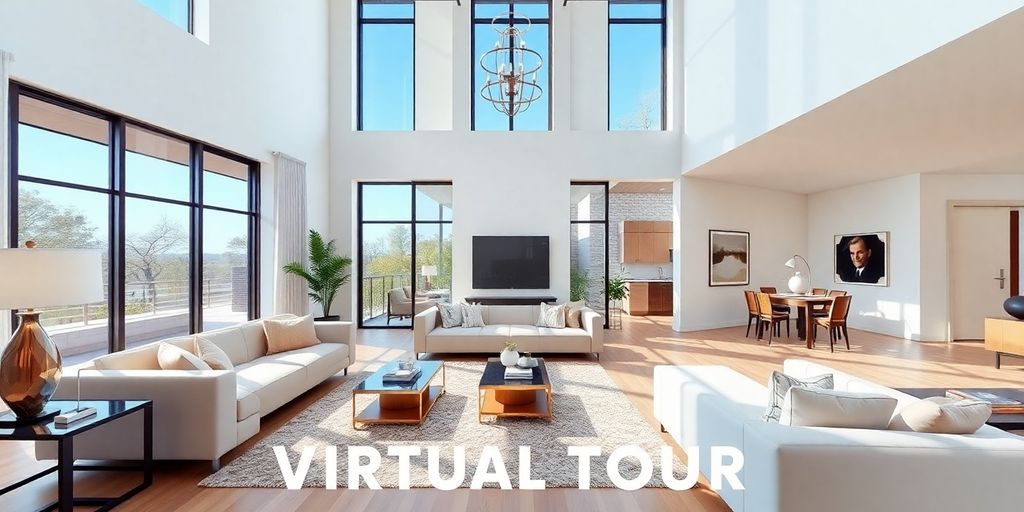
Real estate is changing, and virtual tour software is a big reason why. It's not just a fancy add-on anymore; it's becoming a standard way for people to check out properties. Think about it: instead of endless open houses, potential buyers can explore homes from their couch. It's a game-changer.
Transforming Property Showcases
Virtual tours are making property showcases way better. They give potential buyers a much more immersive experience than photos or videos ever could. It's like being there without actually being there. This is especially helpful for people who are moving from out of state or even another country. They can get a real feel for a place before they even book a flight. Plus, agents can show properties to more people, since they aren't limited by geography or time.
Enhancing Buyer Confidence
Virtual tours can really boost a buyer's confidence. Seeing a place in 3D, being able to look around and zoom in on details, makes a huge difference. It helps them visualize themselves living there. And when buyers feel confident, they're more likely to make an offer. It's all about giving them as much information as possible upfront, so they feel good about their decision.
Streamlining the Sales Process
Virtual tours are also making the whole sales process smoother. Agents can pre-qualify buyers by showing them the property virtually first. This saves everyone time and energy. Plus, virtual tours can be available 24/7, so buyers can explore at their own pace. It's a win-win for everyone involved.
Virtual tours are not just a trend; they're a fundamental shift in how real estate is bought and sold. They offer convenience, transparency, and a better overall experience for both buyers and sellers. As technology continues to evolve, virtual tours will only become more sophisticated and essential in the real estate market.
Events and Entertainment: Realistic 3D Virtual Tour Experiences
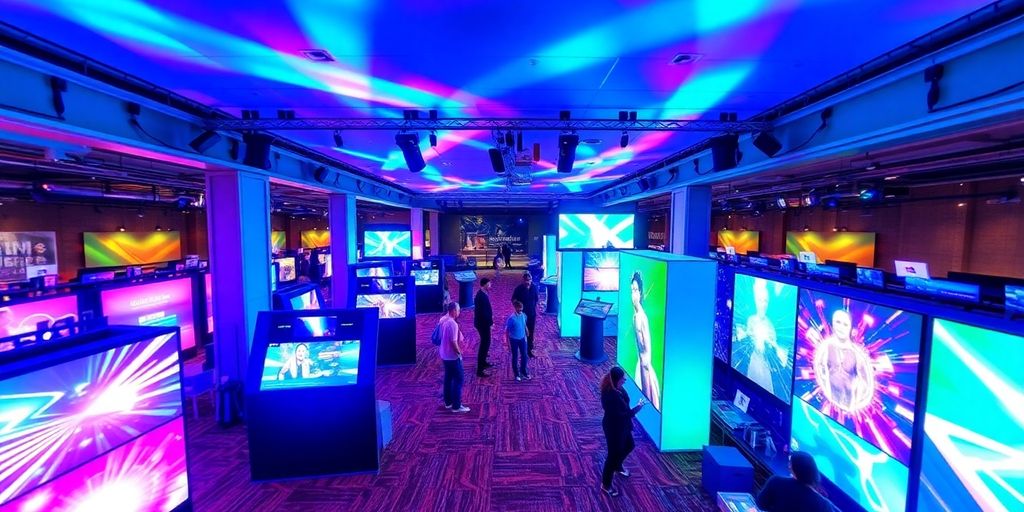
In the world of events and entertainment, virtual tour software is a game-changer. It's not just about looking at pictures anymore; it's about creating experiences. Think about it: potential attendees can explore venues, see seating arrangements, and get a real feel for the space, all from their own homes. This is especially useful for destination events or for people who can't travel easily. Let's explore how this technology is transforming the events and entertainment landscape.
Immersive Venue Previews
Imagine planning a wedding or a corporate event. Instead of relying on brochures and site visits, you can now take a 3D virtual tour of the venue. This allows you to visualize the space, plan layouts, and even see how the lighting will look at different times of day. It's like being there without actually being there. Venues can showcase their spaces in the best possible light, highlighting key features and amenities. This level of detail can make a huge difference in attracting clients and filling event calendars.
Engaging Audience Interactions
Virtual tours aren't just for venue previews; they can also be used to create engaging audience interactions during events. Think about adding interactive elements to a virtual tour of a museum or art gallery. Visitors can click on exhibits to learn more, watch videos, or even participate in quizzes. This turns a passive viewing experience into an active learning opportunity. For concerts or festivals, virtual tours can offer backstage passes or exclusive content, giving fans a unique and memorable experience.
Boosting Event Attendance
Virtual tours can be a powerful marketing tool for boosting event attendance. By giving potential attendees a taste of what to expect, you can generate excitement and increase ticket sales. Consider a music festival that offers a virtual tour of the grounds, showcasing the different stages, food vendors, and art installations. This allows people to get a feel for the atmosphere and decide if they want to attend. It's a great way to reach a wider audience and attract people who might not otherwise consider attending the event.
Virtual tours are changing how events and entertainment are planned, promoted, and experienced. They offer a level of immersion and engagement that traditional methods simply can't match. As technology continues to evolve, we can expect virtual tours to become even more sophisticated and integrated into the event planning process.
Enhancing Customer Engagement Through Virtual Tours
Virtual tours aren't just a fancy add-on anymore; they're becoming a core part of how businesses connect with their customers. It's about creating experiences that go beyond just looking at pictures or reading descriptions. Let's explore how these tours can seriously boost engagement.
Interactive User Experiences
Virtual tours let customers explore at their own pace, clicking on points of interest and zooming in on details. This level of control makes the experience more engaging than passively watching a video or scrolling through images. Think about it: you're not just seeing something; you're exploring it. This interactivity keeps people interested and on your site longer.
Building Trust and Confidence
When customers can virtually walk through a space or examine a product up close, it builds trust. They get a real sense of what they're buying or experiencing, which reduces uncertainty and hesitation. It's like getting a sneak peek behind the scenes, and that transparency can go a long way. For example, a hotel offering a virtual tour of their rooms can give potential guests a clear idea of what to expect, leading to increased bookings.
Increasing Time Spent on Site
A virtual tour is like a magnet for attention. People are naturally curious, and a well-designed tour can keep them clicking and exploring for minutes, maybe even longer. This increased dwell time is great for SEO, signaling to search engines that your site offers something valuable. Plus, the longer someone spends on your site, the more likely they are to convert into a customer.
Here's a simple breakdown of how virtual tours can impact website metrics:
To make the most of virtual tours, consider these points:
- Make sure the tour is easy to navigate.
- Include interactive elements like hotspots and information points.
- Optimize the tour for mobile devices.
Marketing Strategies Powered by Virtual Tour Software
Integrating Virtual Tours into Campaigns
Virtual tours aren't just a cool tech thing; they're a serious marketing asset. Think of them as a 24/7 open house or showroom, always ready to impress. You can weave them into pretty much any campaign you're running. For example:
- Email marketing: Include a link to a virtual tour in your next property listing email.
- Social media: Post snippets of your virtual tour on Instagram or TikTok to grab attention.
- Website landing pages: Embed the tour directly onto your site for an immersive experience.
Virtual tours can build engagement, awareness, brand positioning and reputation, and sales. It’s a single platform, with benefits stretching in almost all possible marketing directions.
Leveraging Data for Targeted Marketing
One of the best things about using virtual tour software is the data you can collect. You can see where people are spending the most time, what features they're clicking on, and how long they're staying engaged. Use this information to refine your marketing efforts. For instance, if you notice that people are always checking out the kitchen in a property showcase, highlight that in your ads. Here's a simple example of how you might track engagement:
Creating Compelling Brand Narratives
Virtual tours let you tell a story in a way that static images and text just can't. Instead of just showing a space, you can create an experience. Think about adding interactive elements like:
- Pop-up information boxes with details about the history or design of a space.
- Embedded videos featuring testimonials from satisfied customers.
- Quizzes or games that encourage exploration and engagement.
By crafting a compelling narrative, you're not just selling a product or service; you're selling an experience. This can lead to stronger brand loyalty and increased sales. It's about making a connection with your audience on a deeper level. You can use 3D virtual tours to create a digital open house, enhancing buyer attraction and engagement.
Expanding Market Reach with Virtual Tour Solutions
Virtual tour solutions are not just about showcasing what you have; they're about reaching people you couldn't reach before. They break down geographical barriers and open doors to new audiences, making your business accessible to a global market. It's like having a 24/7 open house, no matter where your potential customers are located.
Attracting New Audiences
Virtual tours act as a magnet for new audiences. They provide an engaging and accessible way for people to explore your business, product, or location from anywhere in the world. This is especially useful for attracting international customers or those who might not have the opportunity to visit in person. Think of it as expanding your storefront to a global scale, without the cost of physical expansion. For example, a museum can now attract virtual visitors from across the globe, increasing its reach and potential donor base.
Facilitating Remote Engagement
Virtual tours are great for remote engagement. They allow potential customers to interact with your business without needing to be physically present. This is particularly useful for industries like real estate, education, and tourism. Imagine a prospective student taking a campus tour from their living room, or a homebuyer exploring a property across the country. It's all about making it easier for people to connect with you, no matter where they are.
Virtual tours are not just a nice-to-have; they're becoming a necessity for businesses looking to expand their reach and engage with customers in a meaningful way. They offer a cost-effective way to showcase your offerings to a wider audience, breaking down geographical barriers and creating new opportunities for growth.
Breaking Geographic Barriers
Virtual tours completely eliminate geographic limitations. They allow you to showcase your business to anyone, anywhere, at any time. This is especially beneficial for businesses that rely on attracting customers from a wide geographic area. For instance, a hotel can use virtual tours to attract guests from around the world, showcasing its amenities and location in an immersive way. This levels the playing field, allowing smaller businesses to compete with larger ones on a global scale. The use of virtual tour software is a great way to expand your business.
Real-World Success Stories of Virtual Tour Implementation
Marriott International's Hotel Marketing
Marriott really jumped on the virtual tour bandwagon, and it paid off. They put up 360-degree tours of their hotels all over the world. The cool part? They saw a big jump in people actually booking rooms online. It let people check out the rooms and amenities beforehand, which made them feel more confident about booking. It's like window shopping, but for hotel rooms!
Century 21's Real Estate Innovations
Century 21 used virtual tours to shake up how they do open houses. Instead of just relying on people showing up in person, they let people walk through properties online. This meant they closed deals faster and got more serious inquiries. Plus, it opened things up to international buyers who couldn't just pop over for a showing. It's a game-changer for real estate innovations.
University of California's Campus Tours
UC Berkeley wanted to show off their campus to students all over the world, so they created virtual tours. This helped them get more applications from students who lived far away. It's a smart way to reach people who might not be able to visit in person.
Virtual tours are not just a gimmick; they're a way to give people a real feel for a place or product without them having to be there physically. This builds trust and can seriously boost sales or engagement.
Wrapping It Up: The Future of Virtual Tours
In conclusion, virtual tour software is changing the game for businesses everywhere. It’s not just about showing off a space anymore; it’s about creating a whole experience that draws people in. Whether you’re in real estate, education, or retail, these tools help you connect with customers in a way that feels personal and engaging. As more companies jump on board, the demand for these interactive experiences will only grow. So, if you haven’t explored virtual tours yet, now’s the time to start. They could be the key to taking your business to the next level.
Frequently Asked Questions
What is virtual tour software?
Virtual tour software allows businesses to create 3D tours of their spaces, products, or services. This helps customers explore and interact with what they offer online.
How can virtual tours help my business?
Virtual tours can improve customer engagement, help customers make informed decisions, and increase sales by allowing potential buyers to explore without visiting in person.
Is virtual tour software easy to use?
Yes! Most virtual tour software is designed to be user-friendly, so even those without tech skills can create and share tours easily.
Can I customize my virtual tours?
Absolutely! Many virtual tour software options let you add your branding, colors, and even multimedia like videos and audio to make your tours unique.
Do virtual tours work on all devices?
Yes, most virtual tours can be accessed on computers, tablets, and smartphones, making them easy for anyone to view.
Are there any success stories of businesses using virtual tours?
Yes! For example, Marriott used virtual tours to boost online bookings by 67%, and Century 21 saw faster home sales by using virtual property tours.














.png)



.png)
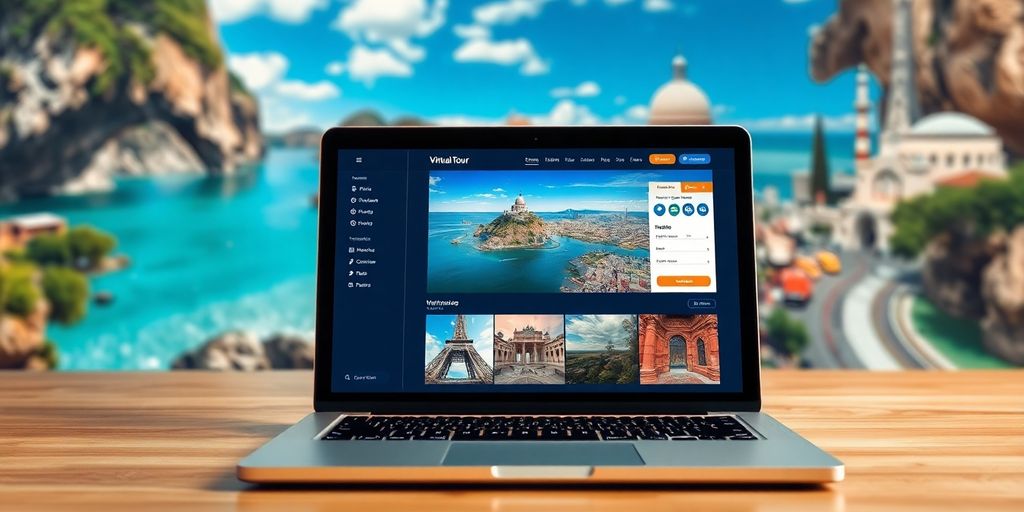






.png)

.png)


